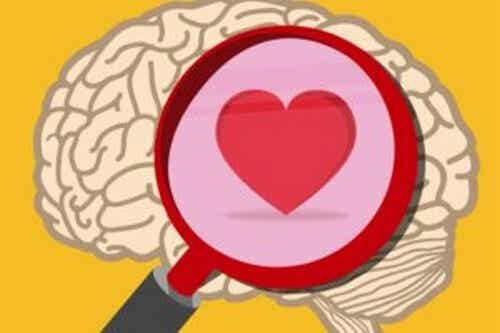Culture regulates the way we express emotions in different ways. Children learn these rules early on through modeling and vicarious learning.

Last update: 24 March, 2022
The emotional development of children allows them to become aware of the origin and manifestation of their emotions. They begin to read them in the facial expressions of others and to interpret them according to the social context. The changes and growth that is expected of them on the emotional level derive on the one hand from the emotional experiences that follow one another around them, on the other from their maturity.
For this reason, certain emotional goals related to themselves and to others begin to emerge in the emotional development of children, taking into account the context. The way children show different emotions it varies greatly depending on the repertoire from which they draw, as well as on the progress of learning. This leads to milestones in understanding, emotional regulation and empathic response.
In this article we will show you three aspects of the emotional development of children that allow you to specifically know their skills.
Emotional understanding
An important role in the emotional development of children is played by understanding. On the one hand, it's about understanding your emotions; on the other, emotional ambivalence and the rules of expression.
Understanding emotions and developing one's own emotional perspective begin to take shape in the early years. In the preschool phase, the little ones deal with increasingly different situations that arouse different emotions in them. An important step forward in understanding emotions occurs when the child begins to view the other as a subject with wants and needs.
On the other hand, the emotional perspective and the level of understanding depend very much on the culture in which you grow up, as well as from the relationship with the parents. Finally, what children believe and expect is tied to contextual factors and their own personal constitution.
Culture regulates the way we express emotions in different ways. Children learn these rules early on through modeling and vicarious learning. The cultural component, therefore, places limits and rules on definitive emotional expression. Understanding these rules of emotional expression concerns aspects such as:
- The intensity of the expression
- The persistence of the same
- His inhibition
On the other hand, you are understanding of emotional ambivalence, understood as the ability that is acquired to understand, know and discriminate the presence of various opposite emotions. The ability to understand this aspect is essential for the little ones to be able to maintain stable relationships with a high emotional charge.
The regulation of emotions as part of the emotional development of children
Emotions are ways of contact with reality. For this, they need to be flexible and consistent with the situation, as well as with their goals.
The use of different strategies to achieve levels of emotional self-regulation varies according to the situation. Gradually, children learn that certain strategies are effective for certain situations and that these depend on the goals they aspire to. The flexibility in the management of the same and the development of levels of internalization allow the child to find adaptive behaviors and socio-emotional adjustment.
Empathy in the emotional development of children
Empathy is regarded as the ability of one person to understand the emotional situation of another and to issue responses in connection therewith. Empathy therefore becomes an emotional component that can only be reached when children reach it the following three aspects:
- Your own emotional understanding
- Emotional understanding of others
- The ability to manage one's emotions
These three aspects are aimed at social situations that allow children to carry out an analysis of the achievement of goals, to highlight affective actions and to understand why they feel different emotions.
As we have seen, there are many factors to consider when it comes to the emotional development of children. However, it is necessary to emphasize that the family and social environment are fundamental and must be favorable for an optimal development of the emotional dimension and of the strategies mentioned.


























